
By Don Radebaugh – The gravestones in the Unknown Plot at Grandview Cemetery are without names…only numbers, marking unidentifiable people, most of whom died in a space of about 20 minutes when more than 20 million tons of water and tangled debris, accumulated over the course of a 14-mile descent down the mountain, came crashing down on the good people of Johnstown, Pennsylvania.
Outside of September 11, 2001, it’s the worst man-made disaster in American history, yet relatively few people even know it ever happened. To be sure, it didn’t help that unprecedented rains covered the area the night before, but as events would unfold, the world would come to understand that this was more than a natural disaster.
It’s hard to imagine that 2,209 people perished on the Friday afternoon of May 31, 1889, all in the path of the enormous wave that most had no idea was coming. Oh sure…many worried about the great earthen dam up the mountain, but most thought it could never happen…not to them anyway. In fact, just the day before, the downtown streets of Johnstown were chock-full of people taking in the Memorial Day parades.
Most of the roughly 30,000 inhabitants of Johnstown were aware of the man-made lake/resort just below South Fork to the east. But most thought things were under control. After all, the resort area was owned and managed by shareholders of the South Fork Fishing and Hunting Club, most of whom were wealthy industrialists from Pittsburgh…men like steel giant Andrew Carnegie and his right-hand man Henry Frick, Robert Pitcairn, who ran the Pittsburgh division of the Pennsylvania Railroad, big-time banker Andrew Mellon and several others. They were some of the smartest entrepreneurs in America…surely, they had this all under control, right? Wrong.
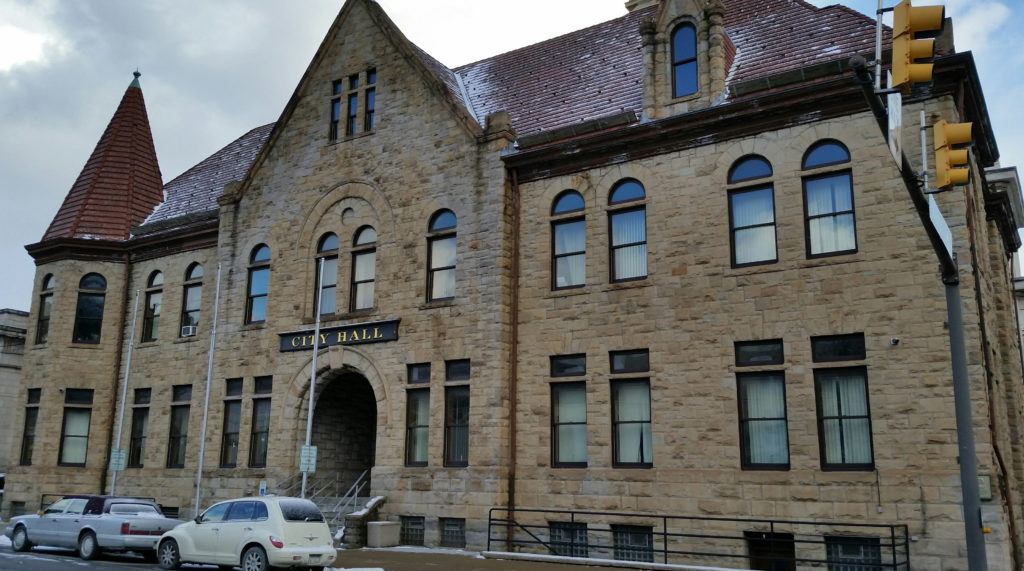
Like so many things, the story of Johnstown fascinates me to no end, so much so, I often stop when I’m traveling through Pennsylvania. It’s such a beautiful city, neatly nestled in a valley with the Allegheny Mountains all around. It’s so hard to fathom the horror that happened there, or that it could ever happen to begin with. Some of the original buildings from that fateful day remain, but very few.
City Hall shows the high-water mark left behind by the 30-ft. deep lake that occupied the city when the daylight hours broke on June 1. 1889. Gone was the usual noise…the grinding away of the Cambria Iron Company steel mill, the whistles from the Pennsylvania Railroad steam engines, the horse hooves and carriages coming against the downtown cobblestone streets and the endless chatter among its resourceful residents. An eerie silence fell over the city except for the new sounds they heard through the night and the next day…the pained moans, groans, gasps and endless, heart-wrenching cries for help among the wounded and dying. Survivors spent the day much in silence, with blank stares that went nowhere, and very much in shock. Some just staggered off, away from the city, never to return.
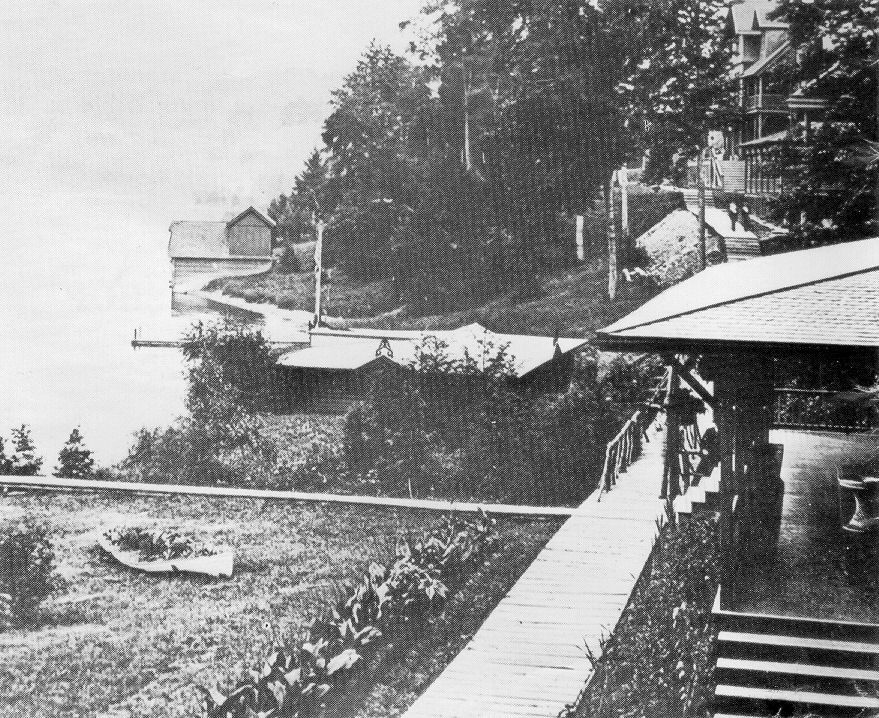
The Johnstown city folks called the lake in the mountains the South Fork Dam. To the members of the South Fork Fishing and Hunting Club, it was Lake Conemaugh. Others called it different things depending on how far you went back with it.
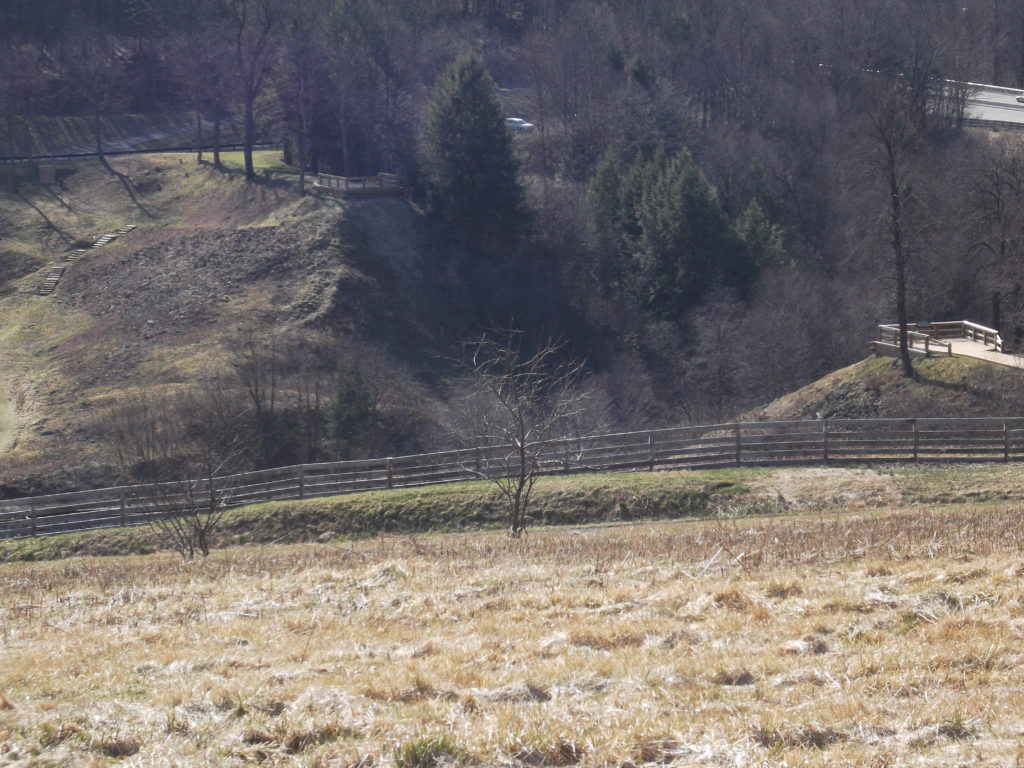
The reservoir and dam were originally commissioned by the state of Pennsylvania to help feed the canal system that often went dry during periods of drought. Work began in 1838 after some 400 acres were cleared of timber. Ironically, by the time the dam was completed in 1852, canals were literally obsolete, out-paced by the railroads that took over as the new mode of transportation for people and commerce alike. The dam was constructed with a ‘spillway’, cut through the rock in the hillside, to accommodate rising water. It also had, wisely installed, five cast iron discharge pipes in a stone culvert at the base of the earthen dam to regulate the depth of the lake, which was about two-and-a-half miles long and about a mile wide. Seeing the old canal route as a right of passage, the Pennsylvania Railroad bought the canal system in 1857 which included the South Fork Dam. Having no use for the dam, the Pennsylvania Railroad let it sit, and it remained virtually unattended for the next 22 years. The Pennsylvania Railroad then sold the dam to Pennsylvania Congressman John Reilly in 1875, who sold it for a loss to one Benjamin Ruff in 1879. Ruff was the first shareholder in the South Fork Fishing and Hunting Club. However, just before the sale, Reilly removed the discharge pipes and sold them for scrap. This not only created a weak spot and continual leaking where the pipes and culvert once were, it also caused the top and middle of the dam to sag…never mind there was now no way to relieve the pressure from the bottom out. The situation was further aggravated when Ruff and his men lowered the dam height by about four or five feet to accommodate two-way carriage traffic across the top. They literally shaved the top of the dam off to widen the road. The lake was soon stocked with fish from Lake Erie for the club’s sportsmen. To prevent the fish from escaping into the Little Conemaugh River below, a wire mesh screen was placed at the front of the spillway. It all added up to a recipe for disaster.
It’s also worth noting that the dam had already failed once, in 1862. But, at that time, the depth of the lake was only 40 feet. And, a watchman on duty, fearing a collapse during heavy thunderstorms, released much of the pressure through the discharge pipes before the break. The end result was no more than a couple of feet of water in the valley below, and gradual at that.
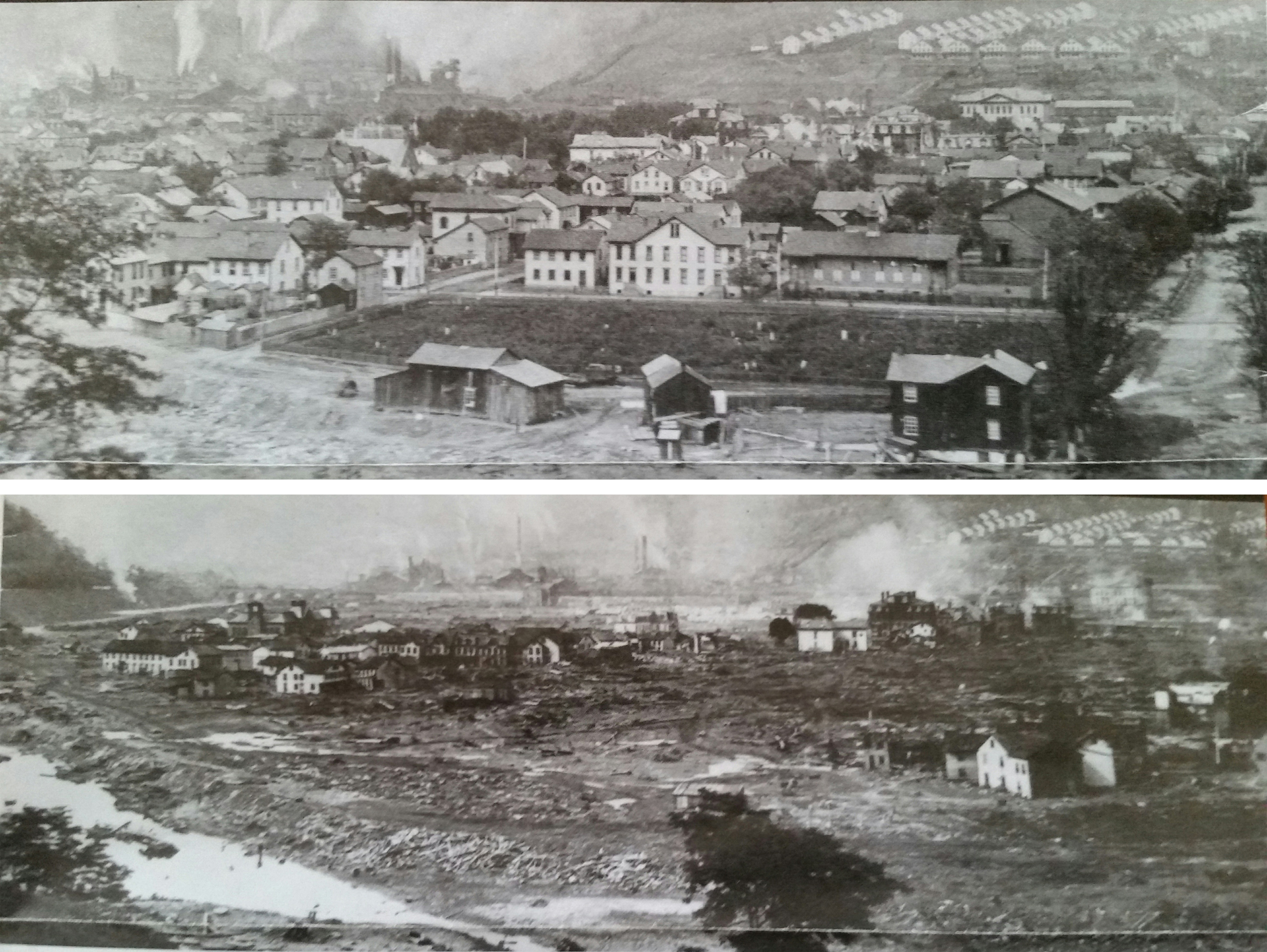
Johnstown was already prone to flooding, situated at the base of mountains where the Little Conemaugh and the Stonycreek Rivers come together to form the Conemaugh River. Forest lands from the nearby hillsides had been continually stripped to accommodate the growing industry in and around Johnstown, so water had a clearer path to town from above. The residents knew about the giant lake 14 miles (9 as the crow flies) above the town, but most knew little about it, or what really went on there. Those who investigated unannounced, were chased off. The idea of the dam breaking at any moment became a standing joke about town, always underneath a hint of seriousness. But the dam had been there for decades, and it hadn’t happened yet. Johnstown worried about it, but only for so long, tucking the concern away for another day.
Meanwhile, members of Ruff’s South Fork Fishing and Hunting Club were living it up at Lake Conemaugh. A clubhouse, which still stands today, was built for members who couldn’t necessarily afford one of the several lake cottages built along the water’s edge. Membership into the elite club was $800, which didn’t include Johnstown residents, most of whom lived on meager wages from the steel mill.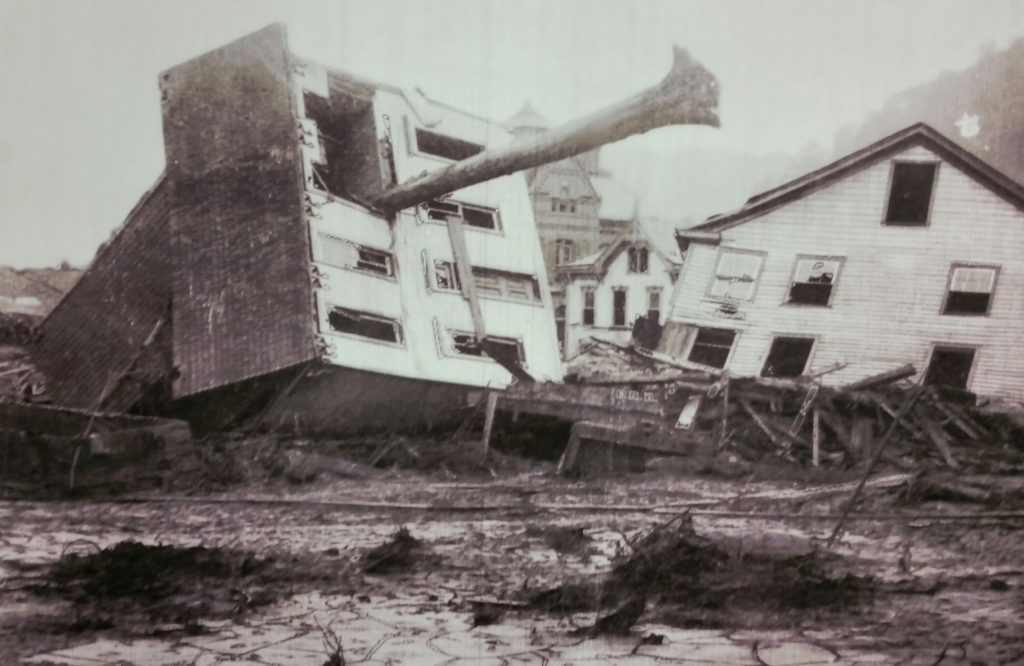
From a monster storm that started over Kansas and Nebraska, the skies turned ominous in Johnstown Thursday afternoon as people scurried home from the Memorial Day parades. The hard, cold rain started late afternoon, coming down hard all night long. The rivers were rising at more than a foot per hour. Residents woke up to standing water in the streets and by 10 a.m. there was water in most cellars as children splashed and played. This was all fairly normal for Johnstown; they had seen this before. But residents also knew that the rivers had already taken on more than they could handle. After a pause in the rain in the early morning hours, by mid-morning, it started to rain again, and just as hard as it had through the night. By early afternoon, most downtown residents couldn’t get in their front doors. With the water continually on the rise, all they could do was attempt to move their possessions to second and third floors. By now, schools sent the kids home and the mills told the employees to go home and look after their families. As the water continued to climb, families, who had second floors, gathered above. All they could do was wait it out.
Back at the dam, club supervisor John Parke had been assessing the situation from the early morning hours. The lake, normally about 70 feet deep, was rising fast, and debris coming down off the mountains covered the surface. It was now dangerously close to the top and rising fast with no way of relieving the pressure.
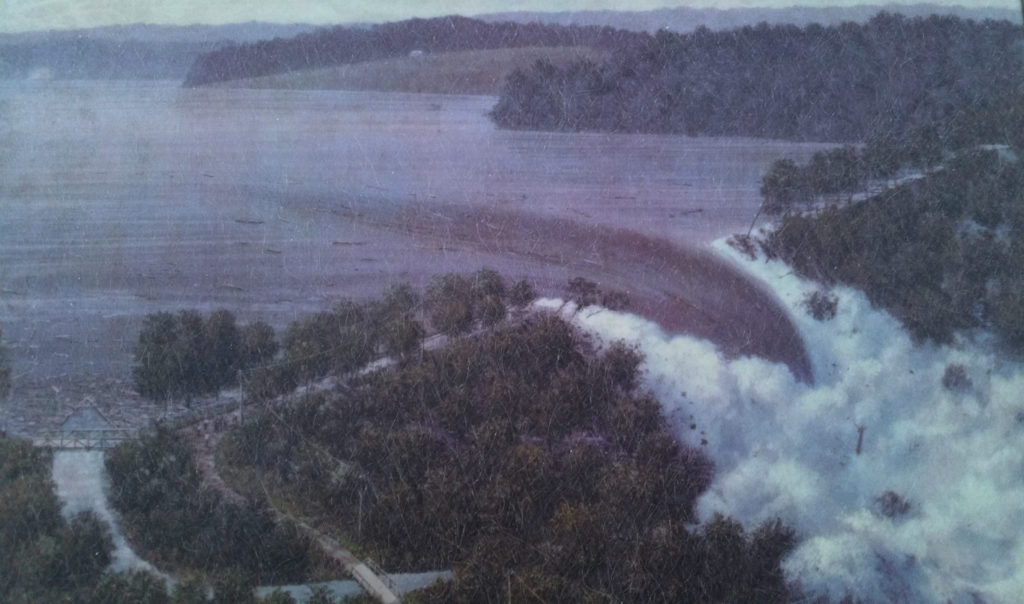
To add insult to injury, the wire mesh screen at the spillway became clogged with debris from the storm, preventing the flow of water. In a last ditch effort, Parke, and his team of men, tried in vain to build up the top of the dam with earth and rocks while another team tried to dislodge the debris in the spillway. None of it worked. By one o’clock, water began spilling over the top of the dam. Parke then arranged for a warning, sent by telegraph, to Johnstown. When the alert arrived, few people heeded the warnings. They had heard this scenario too many times before.
At 3:10 in the afternoon, after the water had dug its own gorge in the top of the dam, the dam just “pushed out” and gave way. For those on the hillside who watched, the lake, it was estimated, took about 45 minutes to empty. Down the mountain came an enormous wall of water collecting everything in its path. The first town, South Fork, being built up the hill, was largely spared. But the next three – Mineral Point, East Conemaugh and Woodvale were literally wiped clean off the map. In East Conemaugh, it swept rail cars right off the track and carried them away with passengers inside. Woodvale, it’s final stop before Johnstown, was obliterated. By the time the wave hit Johnstown, after a series of bends and twists through the Conemaugh valley, it had a straight shot into the city. It was a roaring torrent of ugly brown and yellow water, some say 40 feet high, filled with railroad cars, railroad tracks, houses, barns, miles of barbed wire fences, people, animals, giant jagged trees that snapped of like twigs, rocks, boulders…everything in its path, it carried to Johnstown as the giant mass tumbled down the mountain.
They never knew it was coming until the great rumble and roar was down upon them. Many were sipping coffee and tea from second story windows, kibitzing back and forth across the streets. What came next was unspeakable horror. It was just minutes after 4 p.m. when it hit, less than an hour from its original starting gate. Houses and buildings were crushed and carried away from their foundations as the wave ripped through downtown Johnstown. Men, women and children were taken wholesale…entire families wiped out over a 10 minute span, 99 whole families to be exact. Those who weren’t crushed as their homes disintegrated, were tossed into a raging current of swirling debris. Many clung for their lives on floating rooftops or anything they could grasp. In the immediacy of the horror, and not knowing what just hit or what was happening, some saw it as the second coming of Christ, payback for all their sins. If they weren’t crushed by the force, or drowned, there was another horrible fate waiting for many when the debris began accumulating in a horrific pile at the base of the stone railroad bridge. With hundreds of people trapped on the rubble and tangled in barbed wire, or pinned down by timber or steel, the hideous pile caught fire. With no way out, as many as a hundred people burned to death. For those who made it to the hillsides, all they could do was watch in horror.
When daylight broke, the survivors of Johnstown were in shock, stunned, confused…they couldn’t look after themselves much less anyone else. The immediate problems they faced were immense. Most were ill clad…many, their clothes stripped from their bodies, hiding, shivering naked behind bushes in the unseasonably cold, windy weather. Some couldn’t hide; they were still clinging to something, anything all night to keep from being swept away. To add insult to injury, a cold rain continued to fall. People were voraciously hungry, having gone more than 24 hours with nothing to eat, and no sleep. Now there was no food anywhere. Worse yet, there was no water safe to drink. Dozens, from exposure were already in the early stages of pneumonia. No clothing, no medicine, and the town was completely cut off from the outside world. Four square miles of Johnstown was completely destroyed. The railroads around were destroyed. Bridges and roads were gone. With the dead and dying everywhere, mixed without order among hundreds of dead carcasses of horses, cows, pigs, dogs, cats, birds, rats, the threat of a violent epidemic was serious. There was no way out, and no way in. Temporary morgues were set up with hundreds of the dead…80 here, 90 there, a hundred or more here.

Hundreds of people would never be found, buried deep in several feet of river muck and debris. One of three bodies found couldn’t be identified. In all, 663 bodies from the 2209 would be listed as unknown. As many as a hundred entire families had been wiped out. Bodies were found as far away as Cincinnati, and as late as 1911.
By Sunday afternoon, the press started finding ways off the mountains and into town. As news slowly seeped out, the Johnstown Flood had become the biggest news story since the death of Abraham Lincoln. Supplies slowly started to trickle in. It wasn’t near enough though for the 27,000 survivors who had to be taken care of. Ninety-eight children had lost both parents.

When the world caught wind of what happened, contributions from around the globe came pouring in. Contributions from America alone would come to near four million dollars. Twenty thousand pounds of ham came from Cincinnati. Pittsburgh sent 30,000 pounds of coffee. Money and/or provisions came from every state in the Union. Biscuits, candles, cheese, matches, soap, tents, stoves, shoes, clothes, and every supply one could think of came from everywhere around. More than a dozen countries overseas sent money and/or goods. A week after the disaster, 67-year-old Clara Barton and her newly-formed American Red Cross arrived from Washington. She set up shop in an abandoned railroad car, rolled up her sleeves and went to work around the clock. Barton stayed for five months, never leaving the scene for a moment. As one might expect, she was hailed a hero on her way out of town in October. Her first test with the Red Cross was an unequivocal success.
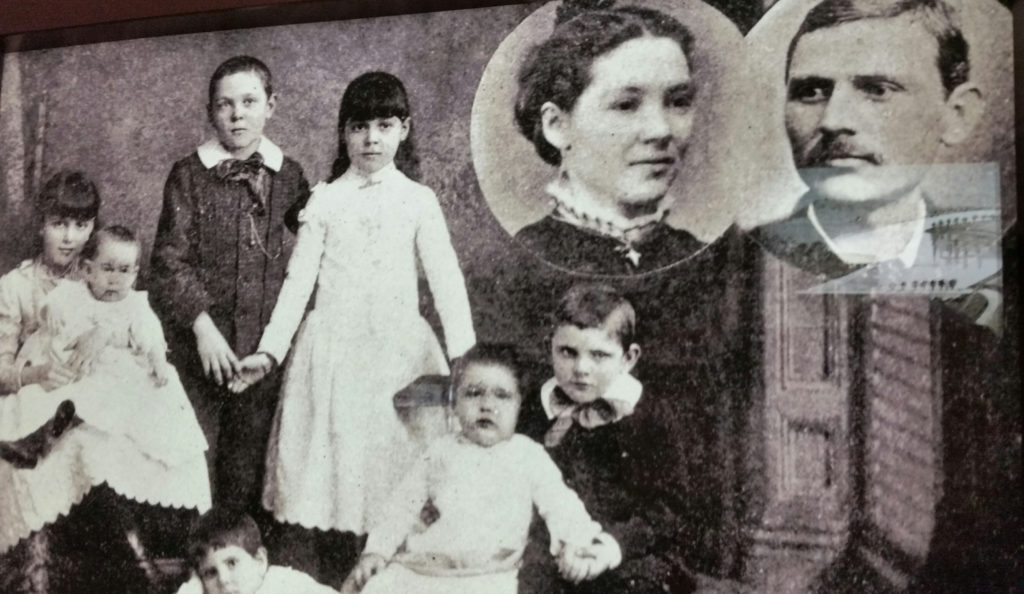
It would be a half-dozen years before Johnstown began to resemble itself again. After the initial shock, anger took hold of the Johnstown residents. They knew that this was more than Mother Nature. But while lawsuits bubbled up over the years here and there, no one, or no entity, was ever held responsible for the Johnstown Flood. Carnegie, on his own dime, built a new library where the old one once stood. The Carnegie Public Library, finished in 1892, is now the home of the Johnstown Flood Museum, open daily. The Johnstown Flood National Memorial, operated by the National Park Service, offers a great view of where Lake Conemaugh once lived. The break in the dam, separated by two abutments that visitors can walk out to, provides further perspective on what happened up there in the mountains on that terrible day. The South Fork Fishing and Hunting Club is still there, and stands in a small town that became St. Michael. Some of the cottages, once occupied by members of the club, also survive.
The graves in the Unknown Plot are marked by numbers; there are no names. On this day, fresh snow covered the ground with a cold wind whipping, whirling and whistling around the stones. No. 25: Unknown female, about 15 years. No. 17: Unknown. Man about 50 years. Short hair, smooth face. No. 66: Small child, about one year.
Editor’s Notes: Every American should visit Johnstown, Pennsylvania. If you don’t go to pay your respects for what happened there, go for the sheer beauty of the little town in the Conemaugh Valley. Spend some money, stay overnight, visit the museums, and the National Park up the mountain. No doubt, the local economy could use a boost. Walk the streets of downtown Johnstown, chock-full of late 1800s brick buildings, alive with character and charm. No doubt you’ll get hungry sooner or later. In that case, make sure you check out Coney Island at 127 Clinton Street, home of one of the tastiest hot dogs in America. Or, just do the right thing and visit Johnstown and salute the men, women and children who lost their lives the day after Memorial Day, 1889…and a tip of the hat, out of respect, to the lost generations who would never come to be because of what didn’t have to happen on that horrible day in Johnstown, Pennsylvania. Lest we forget.
Sources and special thanks to:
The Johnstown Flood, Copyright 1968 by David McCullough
The Johnstown Flood Museum, Johnstown, Pennsylvania
Johnstown Flood National Memorial
Johnstown Area Heritage Association
Don Radebaugh
Find the History Mystery Man on Facebook and YouTube.

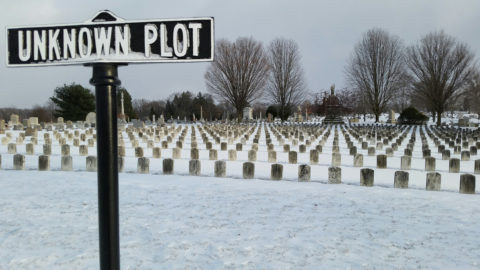
Hi Don, As usual another great artical. I have heard of this but really didn’t know much about it. Thank you for posting it. It was a great read, looking forward to the next one.
Hi Don great read, i actually just talked with you here in bardstown, ky. You interviewed myself and my friend Neal here at Mammys, an Americana (lol) restaurant in Bardstown Ky. Please stop in Mt.Washington, Ky on your way to Louisville and give us a wave. Surely we will meet again as we travel our separate and maybe not so separate ways…. Safe travel… Till we meet again. Brad Morgan
Thanks Brad…it was great meeting you guys. Make sure you check out the Bardstown video at History Mystery Man on Facebook. You guys are featured in it. Thanks again!
Great read! As all your articles are.
Thanks Chad…much appreciated. Great seeing you in Charlotte. #GoRockets
Great article, I’ve read about the dam and flood several times over the years. This and the molasses flood have always stuck in my mind. Would like to visit the old dam site sometime. Is there any creek/stream flow still going through?
Thanks Kent…much appreciated. The old dam site at Johnstown is now a National Park. No creek or stream flowing through…all high and dry.
My great grandmother was a survivor of the Johnstown Flood. She lost her grandparents Joshua and Sara Kidd.
Thanks for sharing your story Melodie…it’s fascinating. Today is the 129th anniversary. A salute to your great-grandmother and her grandparents, Joshua and Sara Kidd.
hi don,i`m glad you got to go and vist johnstown,pa. As you know i do have a personel conection there as that have family that live there.
ps, i love your web site that you started
Thanks Steve. I remembering you telling me about your Johnstown connection. I look forward to talking more about it.